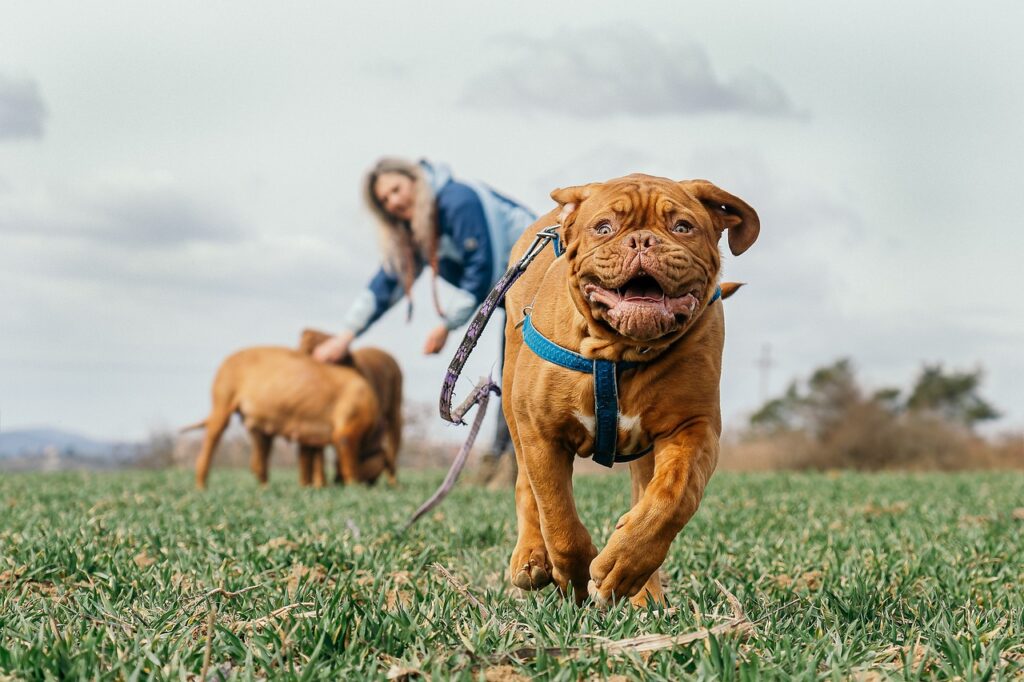The Safest Shock Collars for Puppy Training: Do They Work?
Training a puppy can feel challenging, especially when it comes to finding the best methods. While positive reinforcement methods are popular, some pet owners explore shock collars as an option. This article dives into the safety and effectiveness of using shock collars for puppy training.
The Delicate Balance of Training and Welfare
The Growing Debate Surrounding Shock Collars
Shock collars have sparked significant debate among dog trainers and pet owners. Some argue they are effective for correcting unwanted behaviors. Others raise concerns about their emotional and physical impact on pets. The question is whether they can be used safely and ethically.
Puppy Training Challenges and the Search for Solutions
Puppies can be energetic and curious, leading to behaviors that may not align with their owners’ expectations. Chewing furniture, excessive barking, and pulling on leashes are common issues. Owners often look for quick solutions, which is why shock collars enter the conversation. The need for effective solutions drives interest, but safety is crucial.
Setting Expectations: Safety First
Before considering shock collars, it’s essential to prioritize your puppy’s safety. Training should enhance your puppy’s life and well-being. Understanding the potential risks and the humane use of any training tool is vital.
Understanding Shock Collar Technology and its Effects
Different Types of Shock Collars: Static, Vibration, and Citronella
Shock collars vary widely in technology and function. Here are the main types:
- Static Shock Collars: These deliver a small electric shock to get the dog’s attention.
- Vibration Collars: These provide a vibrating sensation as a warning.
- Citronella Collars: These spray a citrus-scented liquid to deter barking.
Each type has its pros and cons, impacting training efficacy and puppy comfort.
How Shock Collars Affect a Puppy’s Behavior: Neuroscience and Learning
Shock collars can influence behavior through classical conditioning. A puppy might learn to associate a specific action with an unpleasant stimulus. However, the effectiveness largely depends on the puppy’s temperament and the owner’s training approach.
Potential Risks: Physical and Psychological Trauma
Using shock collars can lead to several risks, including:
- Physical Issues: Skin irritations, burns, or other injuries can occur from improper use.
- Psychological Effects: Fear and anxiety may develop, causing behavioral issues like aggression.
Creating a positive environment during training is crucial.

Choosing a Safe and Humane Shock Collar
Features to Prioritize: Adjustable Intensity, Safety Mechanisms, and Quality Materials
When selecting a shock collar, consider these features:
- Adjustable Intensity: Allows customization based on your puppy’s needs.
- Safety Mechanisms: Look for models with automatic shut-off features.
- Quality Materials: Ensure the collar is made of durable, non-irritating materials.
A thoughtful choice can enhance your puppy’s safety during training.
Top-Rated Shock Collars: Product Reviews and Comparisons
- PetSafe Elite Little Dog Remote Trainer
- Features static and vibration settings.
- Adjustable levels for better control.
- Highly rated for small breeds.
- Educator E-Collar Remote Dog Training System
- Offers a variety of settings, including a “lock and set” feature.
- Waterproof and can be used in various environments.
- SportDOG 425X Remote Training Collar
- Great for both small and large breeds.
- Long-range capability for outdoor training.
Alternatives to Shock Collars: Positive Reinforcement Methods
Many trainers and pet owners advocate for positive reinforcement. Methods include:
- Treats and Praise: Rewarding good behavior fosters a strong bond.
- Clicker Training: A click sound paired with rewards helps dogs learn quickly.
These alternatives focus on building trust and respect.
Effective and Ethical Training Techniques with Shock Collars
Gradual Introduction and Positive Reinforcement Combination
If you choose to use a shock collar, introduce it gradually. Combine it with positive reinforcement techniques to create a balanced approach. This allows your puppy to learn without fear.
Avoiding Common Mistakes: Overuse, Incorrect Settings, and Misinterpretation of Signals
Avoid these pitfalls to ensure effective training:
- Overuse: Relying solely on a shock collar can harm the training process.
- Incorrect Settings: Always use the lowest effective setting.
- Misinterpretation of Signals: Be aware of your puppy’s body language for signs of distress.
Monitoring Your Puppy’s Response: Recognizing Signs of Distress
Stay attentive to your puppy’s reactions. Signs of distress include:
- Whining or yelping.
- Cowering or hiding.
- Tail tucked between legs.
These signals indicate it may be time to reassess your approach.
Potential Long-Term Effects on Your Puppy
Behavioral Issues: Fear, Anxiety, and Aggression
Using shock collars improperly can lead to long-term behavioral problems. Fear and anxiety can worsen, resulting in aggression or withdrawal. Affected dogs may develop a negative association with training altogether.
Physical Health Concerns: Skin Irritation and Internal Injuries
Improper usage can also cause physical complications. Skin irritations, burns, or even internal injuries may occur if the collar is left on too long or set too high.
The Importance of Professional Guidance: Consulting a Veterinarian or Certified Trainer
Consulting professionals can provide valuable insights. A veterinarian or certified trainer can guide you on best practices for using training tools.
Conclusion: A Balanced Approach to Puppy Training
Key Takeaways: Prioritizing Safety and Humane Training Methods
When exploring shock collars, prioritize safety and humane practices. Understand the potential risks and choose alternatives that suit your puppy’s needs better.
When to Seek Professional Help
If training challenges persist, consulting a trainer or behaviorist is a smart move. They can offer tailored strategies to enhance your training journey.
The Long-Term Benefits of Positive Reinforcement
Ultimately, positive reinforcement offers the best long-term results in puppy training. Building trust and connection leads to a happy, well-adjusted dog.




